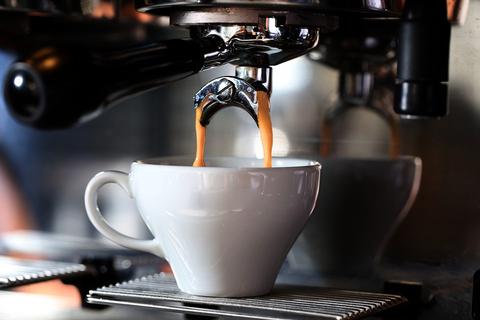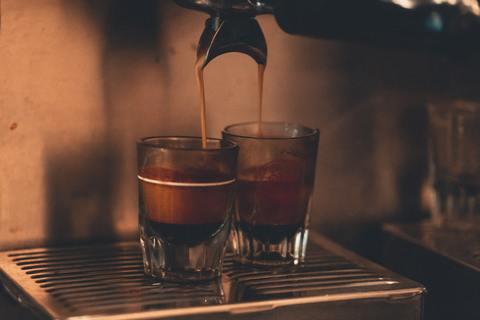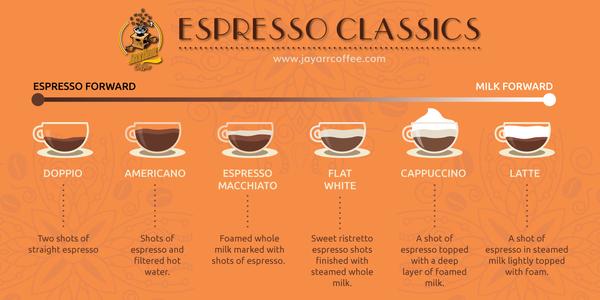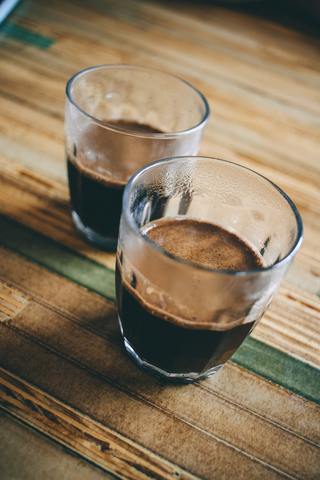We all love coffee. Whether it’s a punchy espresso or a sweet Starbucks frappe, enjoying a cup of Joe every day is truly delightful. However, many of us never take a deeper into the different techniques that go into making it. In this article, we’ll tackle a coffee keystone, the espresso, and its different pulling methods: the normale, lungo, and ristretto.
A Closer Look at the Normale
How do you make it?
Normale is the Italian term for “normal espresso.” As its moniker might suggest, this particular approach to making espresso is quite widespread and is the basis for most espresso drinks. From a cappuccino to an Americano, even for something with a little bit of extra pizzazz, it all starts with a normale. Normale is truly the perfect espresso building block for any espresso drink. It adds a balanced flavor to any mixture of ingredients, including milk, sugar, or even chai. As the normale is the most common espresso shot, it is a great place to start for our shot comparison!
So, how do you make it? The coffee to water ratio for a normale is generally 1:2. The pull time is generally right around 30 seconds in a standard espresso machine. For the coffee nerds out there: the water pressure is commonly set at nine-bar, which is nine times more than the atmospheric pressure at sea level!

What’s the flavor profile?
In a word, balanced. At the end of this particular pull, you should have an aromatic espresso shot with a layer of crema on top and just enough acidity.
Normale is the standard flavor of espresso. Espresso generally has a concentrated taste. Along with some acidity, you’ll also notice a pleasant caramelized aroma, almost like dark chocolate, burnt caramel, or butterscotch.
There are a few other notes that you may taste in an average normale espresso- most will have an earthy and nutty profile. The crema that forms on top of the shot usually provides for a smooth and creamy texture to accompany sweeter overtones.
How do you drink it?
When most people start drinking coffee, they’ll usually start with milk-based drinks or watered-down espresso drinks that use a normale shot, like an Americano or a Long Black (quite popular in Australia!). Those who are brave enough to start with straight-up espresso often add in a spoonful of sugar to counteract the punch of a naked espresso shot.
Traditionally in Italy, people drink normale espresso at a bar – and when we say bar, we mean an actual bar, with people standing in front of the barista and quickly downing an espresso shot before getting on with their day. This is because, in Italy, espresso is enjoyed more often as a quick, refreshing break rather than a casual drink to be sipped. Instead, Italians may use a Moka pot at home if they are looking for a more relaxing experience.
Ok so…What is a Ristretto?

How do you make it?
In Italian, ristretto means “restrained,” giving you an important clue about its pulling method! A ristretto is essentially a shorter, more concentrated shot than an normale, in which the barista keeps the water content to a minimum for the same amount of grounds. This process leads to a creamier texture, and a richer, bolder flavor.
So, how do you make it? When baristas make ristretto shots, they will usually use about 15 ml of water. This means that the end result is only half the volume of a normale espresso, so it’s quite small. The coffee to water ratio for a ristretto shot is generally around 1:1 (up to 1:1.5 potentially), but the grind will be finer than with a normale shot. The pull time should be around 20-30 seconds in a standard espresso machine.
What’s the flavor profile?
A ristretto is favored among many coffee lovers because it has a sweeter taste. This lighter, yet somehow bolder, flavor results from the only the first compounds being extracted from the espresso. It maintains its boldness, but it is not as bitter as a normale shot of espresso. However, under-extraction is a potential concern when preparing ristretto. If ristretto is not brewed to perfection, the resulting coffee could easily turn out sour.
In a cup of ristretto, coffee addicts can enjoy the more delicate notes of a particular coffee. Ristretto is a particularly great option if you’re using single origin beans. As single origin beans have their own distinctive profile, ristretto can allow for tasting these notes with minimal bitterness. Overall, a ristretto is a perfect way to soak in all the nuances and intricate flavors of your beans.
How do you drink it?
A ristretto can be drunk by itself; however, many cafes are now making their milk-based drinks with ristretto. This is because the ristretto brings out the sweet-tasting notes in drinks such as cappuccinos and lattes.
A properly made flat white also includes ristretto shots instead of normale espresso shots. For more about preparing and pouring a flat white (and the differences between a flat white and a latte), see our guide to the flat white.

Now Let’s Check Out the Lungo!
How do you make it?
Lungo is the opposite of a ristretto. In Italian, lungo means “long,” which about sums the lungo up! A lungo is made the same way as an espresso shot, but with more water than used for a normale espresso. The coffee to water ratio for a lungo is generally between 1:3 and 1:3.5. The pull time should be around 30-40 seconds in a standard espresso machine.
What’s the flavor profile?
A lungo has more bitter taste than that of an espresso or ristretto, as this longer extraction causes more bitter compounds to be present. Yet, fans of the lungo say that this drink has a richer body and with a more complex flavor. Most of the “high” and delicate notes are muted from the long exposure to water.
How do you drink it?

A lungo is best enjoyed on its own, as the higher water content will be too watery for milk-based drinks. However, if you’re not used to bitter-tasting coffee, you may need to add some sugar!
Many baristas also use a lungo shot when they’re making a “shot in the dark.” This is essentially a brewed coffee with an extra espresso shot. Baristas use the lungo shot to give a roasty backbone to a lighter brew. Additionally, some coffee connoisseurs even enjoy a lungo shot with tonic water and fresh lemon. The lungo complements the sweetness of the tonic water, making it a great summer drink!
Conclusion
Essentially, a ristretto, normale, and lungo are all espresso but are pulled in different ways. Specifically, the differences in the amount of water used for each dramatically changes the espresso’s flavor profile.

How do you know which one would be the most suited to your tastes? The best way to discover which style you like best is to try each yourself.
